Modern garden edging transforms outdoor spaces by creating clean boundaries that enhance both functionality and visual appeal. These contemporary border solutions help define planting areas, prevent grass encroachment, and add structural elements that complement modern landscape design. From sustainable materials to high-tech lighting systems, today's edging options blend durability with aesthetic innovation to create sophisticated outdoor environments that reflect current design trends.
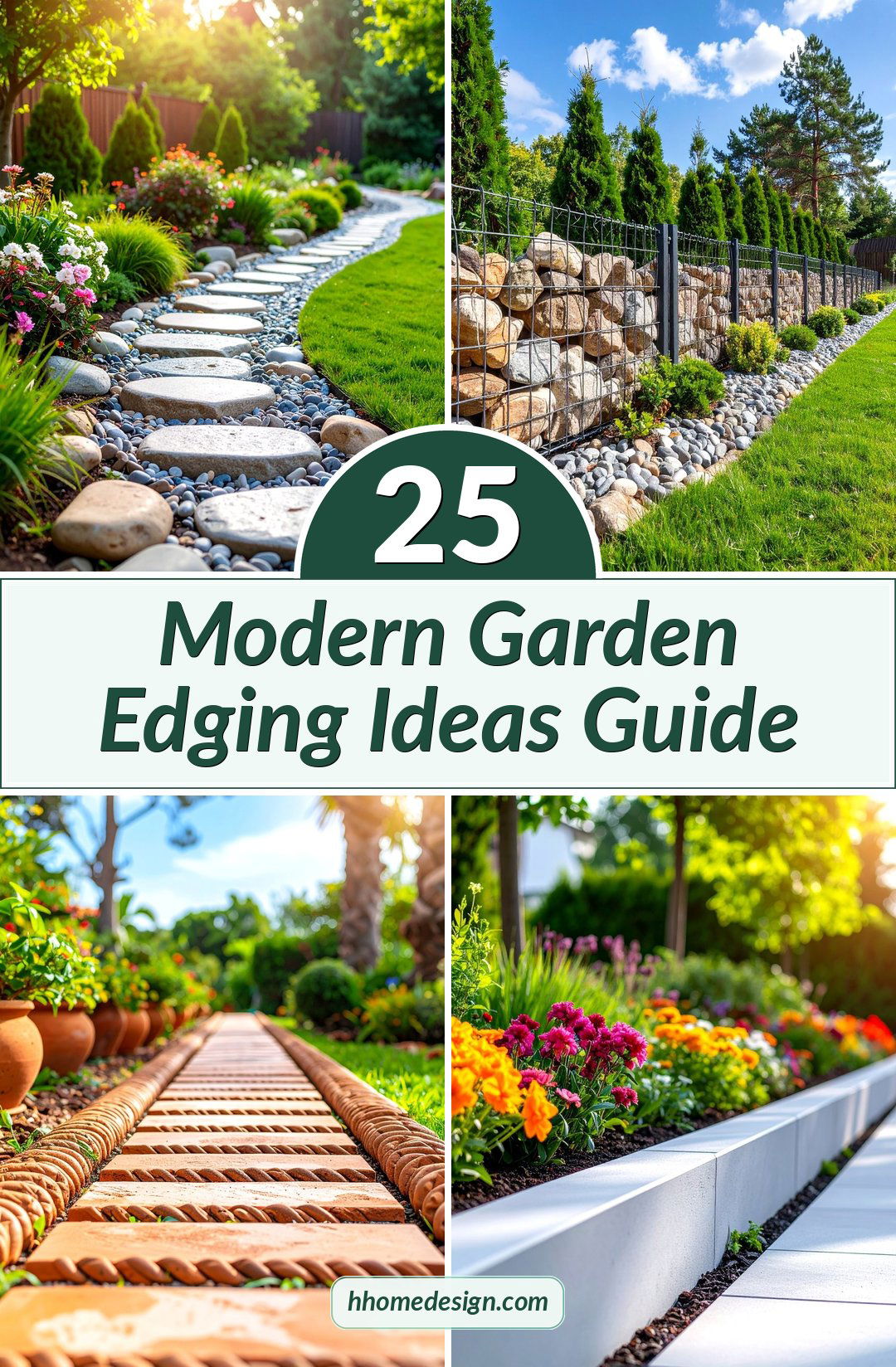
1. Steel Strip Edging with Clean Lines

Steel edging strips offer the ultimate minimalist approach to modern garden design with their razor-sharp boundaries and industrial aesthetic. These thin metal barriers sit flush with the ground, creating nearly invisible lines that define spaces without overwhelming the landscape. The galvanized or powder-coated finishes resist weathering while maintaining their sleek appearance for decades. Installation involves simple hammering into prepared trenches, making this solution both professional-looking and DIY-friendly. The material works exceptionally well around curved beds and geometric plantings, adapting to any garden shape while providing superior grass containment. This edging style particularly complements contemporary homes with clean architectural lines and modern hardscaping elements.
2. Corten Steel Weathering Borders
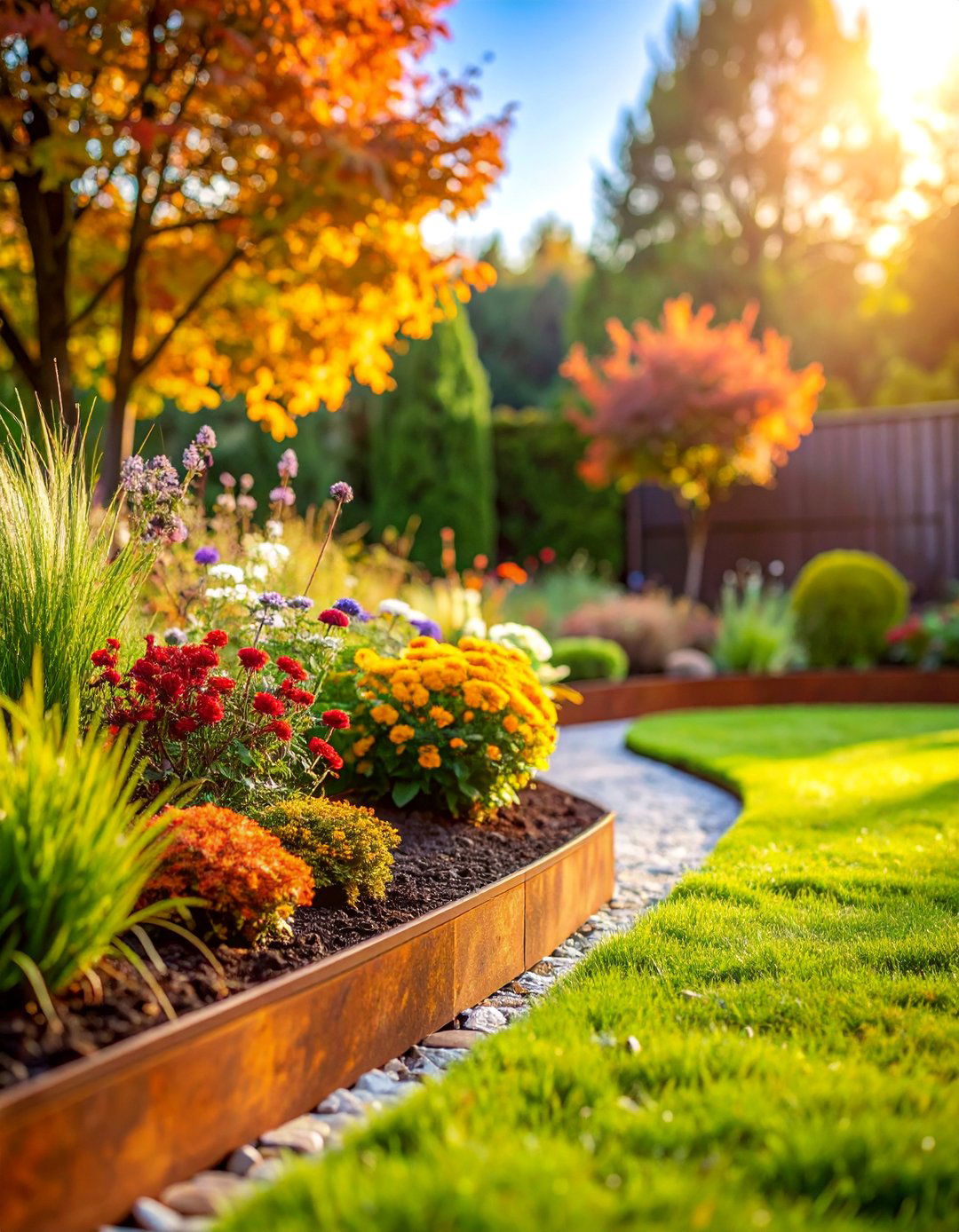
Corten steel edging develops a distinctive rust patina that creates warm, earth-toned boundaries with industrial sophistication. This weathering steel naturally forms a protective layer that prevents further corrosion while developing rich amber and rust colorations over time. The material provides exceptional strength and durability in all weather conditions, making it perfect for permanent landscape installations. Corten steel works beautifully with native plantings and natural stone elements, bridging the gap between industrial design and organic garden aesthetics. The self-weathering properties eliminate the need for painting or protective coatings, reducing long-term maintenance requirements. This edging solution particularly enhances drought-tolerant gardens and contemporary xeriscapes where low-maintenance materials are prioritized.
3. Poured Concrete Curbing Systems
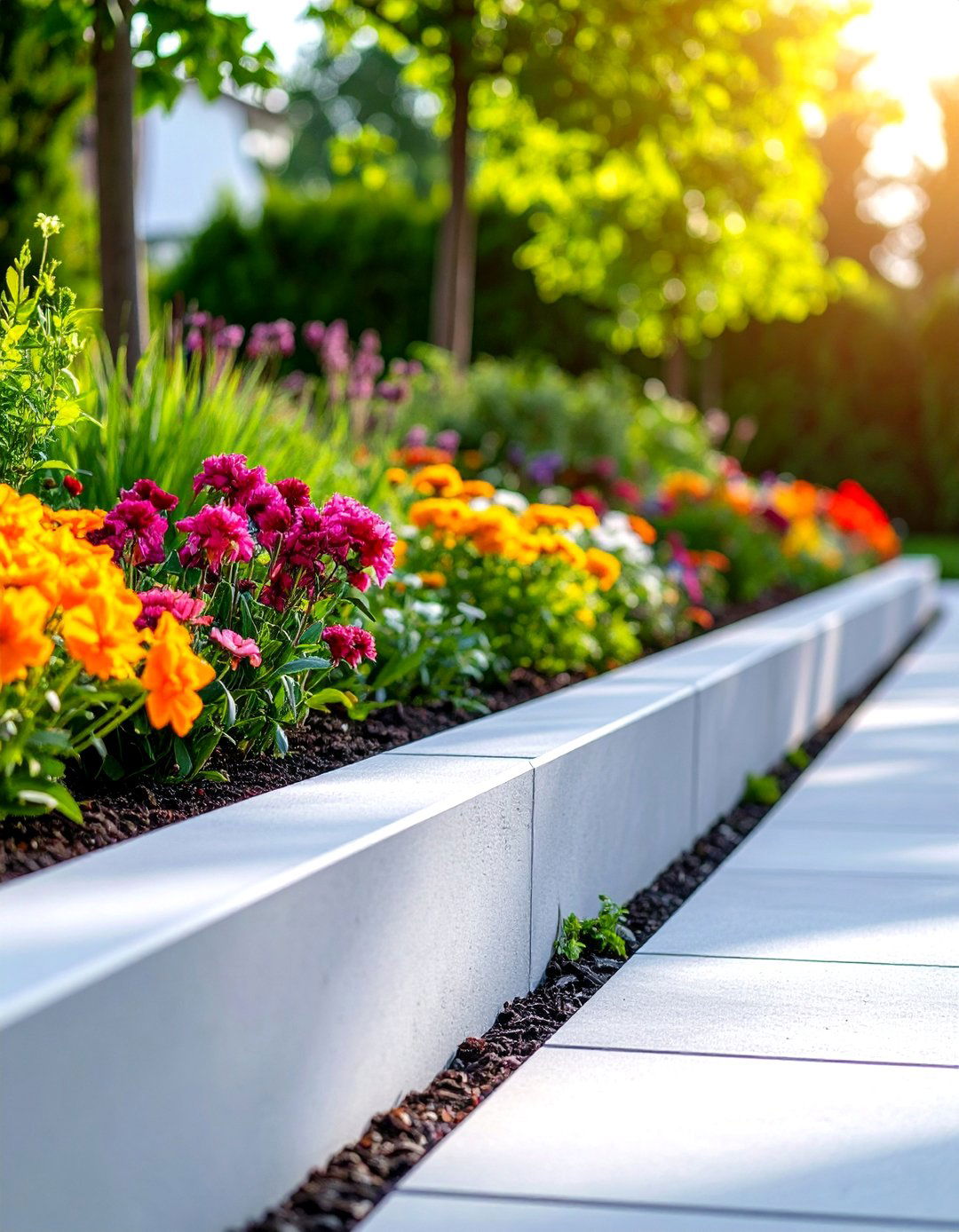
Poured concrete edging creates seamless, sculptural borders that can be customized with colors, textures, and decorative aggregates for unique design expressions. Professional installation involves creating forms and pouring continuous concrete strips that eliminate joints and create flowing, uninterrupted lines throughout the garden. The material can be stamped, colored, or embedded with decorative stones to match architectural elements or complement specific plant palettes. Concrete curbing provides excellent durability and can incorporate drainage channels or planting pockets for added functionality. The substantial appearance works well in formal garden settings and provides strong visual weight that anchors larger landscape compositions. This edging solution particularly suits contemporary homes where concrete is featured in architectural elements.
4. LED-Integrated Smart Lighting Borders

LED-integrated edging combines functional borders with sophisticated lighting systems that transform gardens into evening showcases while maintaining clean daytime aesthetics. These systems feature built-in channels for LED strips or individual light fixtures that provide pathway illumination and accent lighting for plantings. Smart control systems allow color changes, dimming, and programming to create dynamic lighting scenes throughout the seasons. The edging materials typically combine aluminum or composite construction with weatherproof electrical components designed for permanent outdoor installation. Solar-powered options eliminate the need for electrical connections while providing sustainable operation. This technology-forward solution particularly appeals to modern homeowners who value smart home integration and want to extend their outdoor living hours with sophisticated lighting design.
5. Gabion Wire Basket Edging
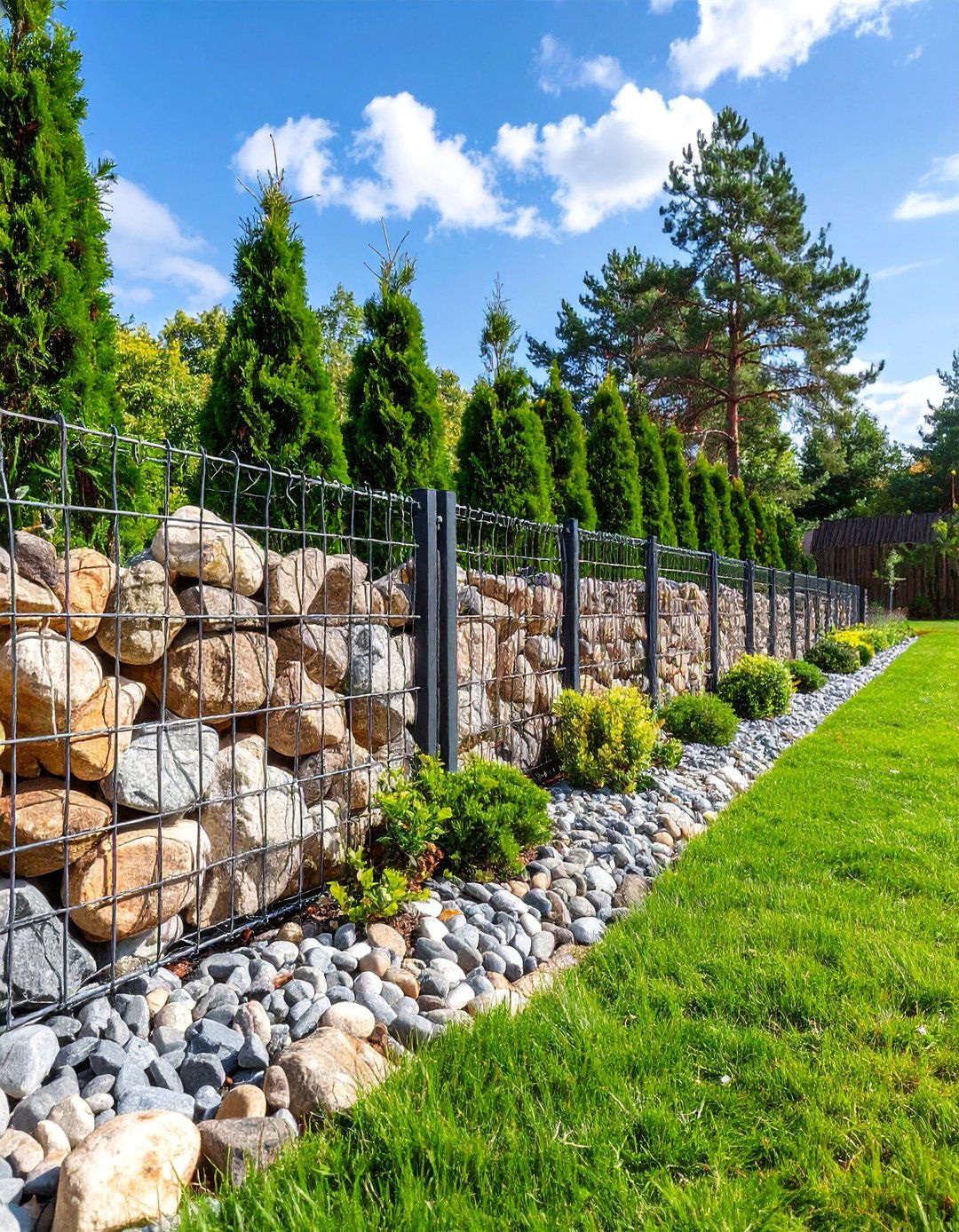
Gabion edging utilizes wire mesh containers filled with stones to create substantial, textural borders that blend industrial design with natural materials. These modular systems can be stacked or arranged in various configurations to accommodate different height requirements and design preferences. The wire baskets accept locally sourced stones, recycled concrete, or decorative aggregates, making them environmentally sustainable and cost-effective. Gabion edging provides excellent drainage while creating strong visual impact through the interplay of geometric wire forms and organic stone textures. The substantial construction works well for sloped sites where erosion control is needed alongside aesthetic enhancement. This edging style particularly complements contemporary architecture and industrial landscape design themes while providing long-term durability with minimal maintenance requirements.
6. Glass Pebble Mosaic Borders

Glass pebble edging creates vibrant, light-catching borders that add color and sparkle to garden boundaries through recycled glass aggregates in various sizes and hues. These smooth, tumbled glass pieces provide excellent drainage while creating soft, organic edges that contrast beautifully with structured plantings. The material reflects light throughout the day, creating dynamic color shifts that change with sun angles and weather conditions. Installation involves creating shallow trenches filled with glass pebbles, often combined with edging strips to contain the material. Color coordination with nearby plants or architectural elements creates cohesive design themes throughout the landscape. This sustainable edging solution particularly appeals to environmentally conscious gardeners who want to incorporate recycled materials while adding unique visual interest to their outdoor spaces.
7. Raised Bed Container Systems
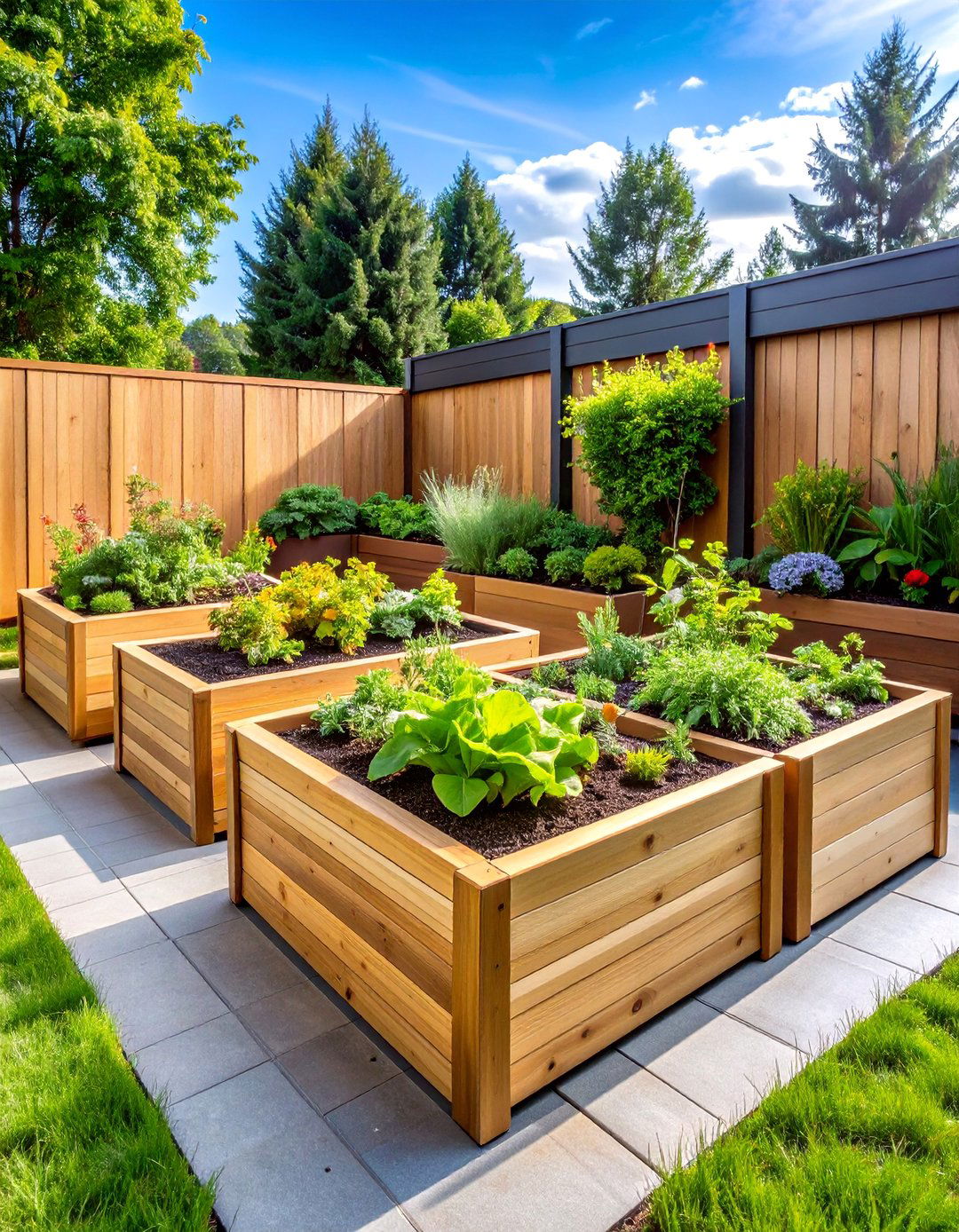
Raised bed edging creates structured planting areas with built-in height variation that adds architectural dimension to modern garden designs. These systems utilize materials like composite lumber, steel panels, or concrete blocks to create geometric planting containers that elevate soil levels for improved drainage and plant health. The raised construction provides better soil control and easier maintenance while creating strong visual boundaries between different garden zones. Modular systems allow for custom sizing and arrangement to fit specific site conditions and design requirements. The elevated planting areas work particularly well for vegetable gardens, herb displays, and ornamental plantings that benefit from improved soil conditions. This edging approach particularly suits contemporary landscapes where clean lines and geometric forms are emphasized alongside functional gardening practices.
8. Living Hedge Geometric Borders

Living hedge edging creates verdant, geometric borders using carefully selected and maintained plant materials that provide structure while adding seasonal interest and habitat value. Modern hedge design emphasizes clean lines, uniform heights, and geometric shapes that complement contemporary architecture and landscape design principles. Plant selections include boxwood, yew, privet, and other dense, fine-textured species that respond well to regular pruning and shaping. The living borders provide excellent privacy screening while creating strong visual boundaries that evolve with seasonal changes. Proper spacing and irrigation systems ensure uniform growth and long-term health of the hedge plantings. This traditional edging method particularly suits formal garden settings and provides sustainable, carbon-sequestering borders that support local wildlife while maintaining sophisticated aesthetic appeal.
9. River Rock Natural Boundaries
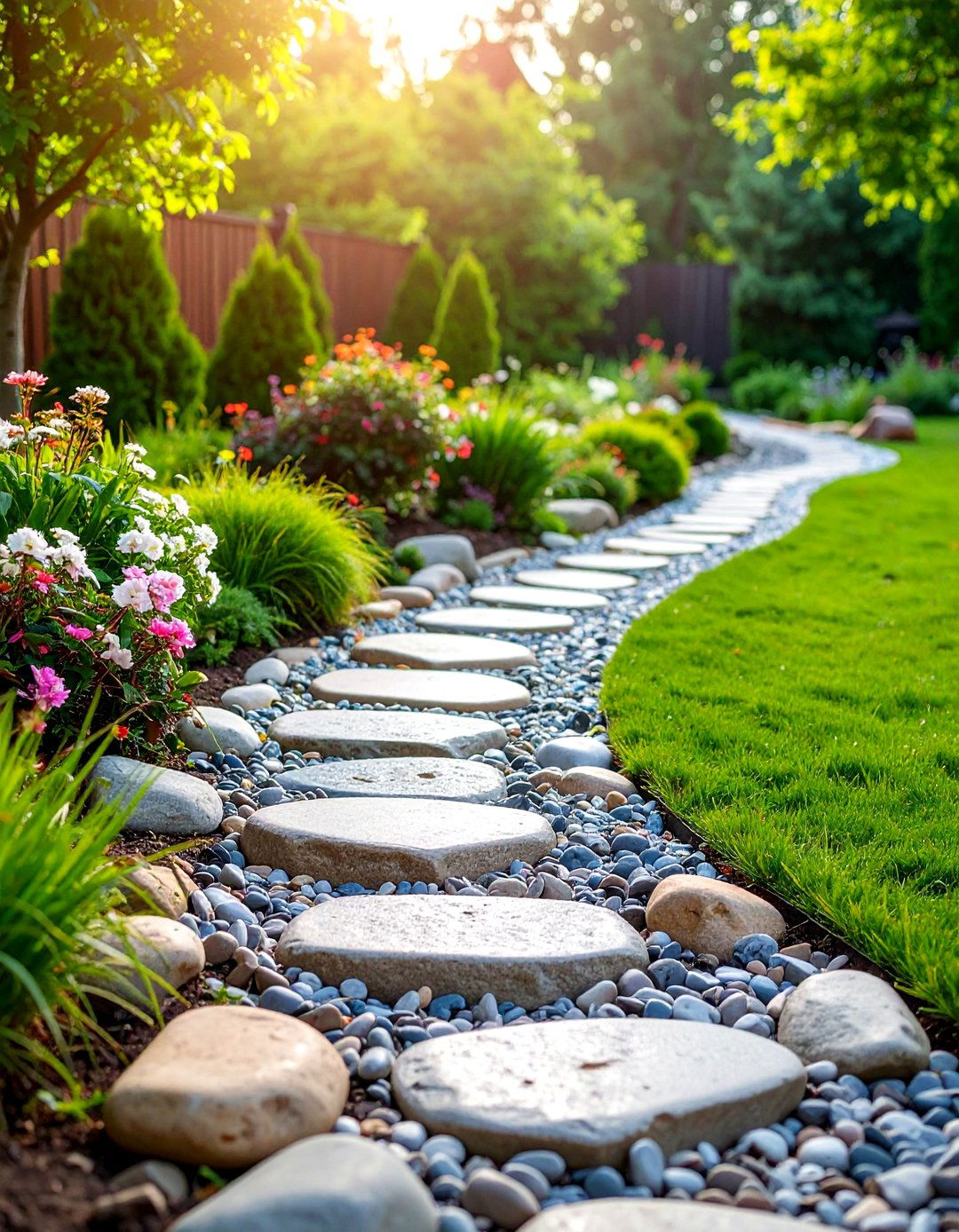
River rock edging creates organic, flowing borders using smooth stones in various sizes to establish natural-looking boundaries that complement informal planting schemes. These water-worn stones provide excellent drainage while creating soft transitions between different garden areas and materials. The natural color variations and organic shapes work well with both contemporary and traditional landscape styles, providing versatility in design applications. Installation involves creating shallow depressions filled with different sizes of river rocks, often graduated from larger to smaller stones for visual flow. The material requires minimal maintenance while providing permanent, weather-resistant borders that age gracefully. This edging solution particularly enhances naturalistic gardens, rain gardens, and landscapes that emphasize native plants and sustainable design practices.
10. Bamboo Sustainable Strip Borders
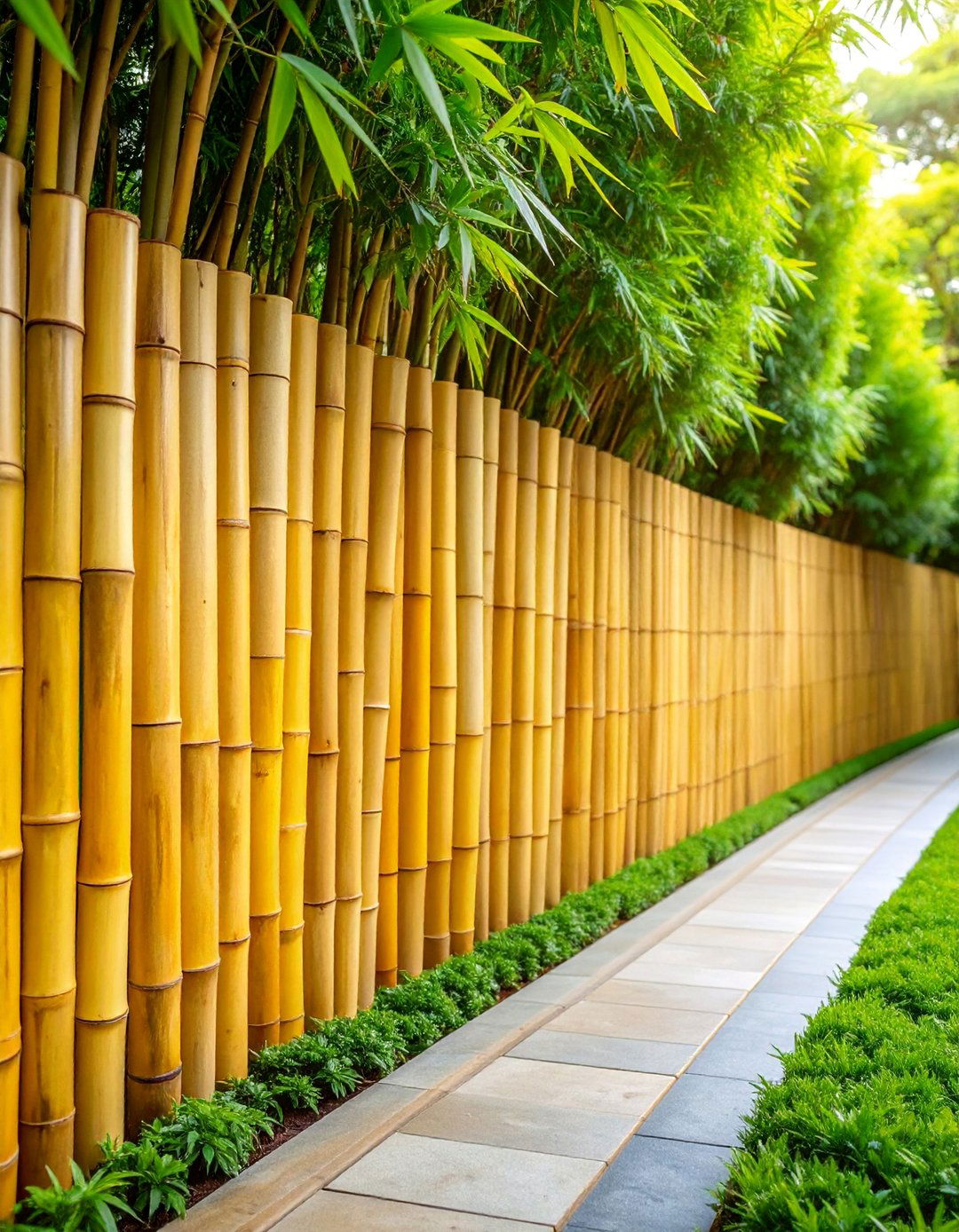
Bamboo edging provides sustainable, rapidly renewable borders with clean lines and tropical aesthetic appeal that works well in contemporary eco-friendly garden designs. The material offers natural weather resistance and attractive golden coloration that complements a wide range of plant palettes and hardscape materials. Bamboo strips can be installed individually or in continuous runs to create flowing borders that adapt to curved bed edges and organic garden shapes. The lightweight material makes installation straightforward while providing adequate containment for mulch and soil amendments. Regular treatment with natural oils maintains the attractive appearance and extends the material's lifespan in outdoor conditions. This sustainable edging solution particularly appeals to environmentally conscious gardeners who want renewable materials that complement Asian-inspired garden themes and contemporary sustainable landscape design.
11. Terracotta Tile Mediterranean Borders
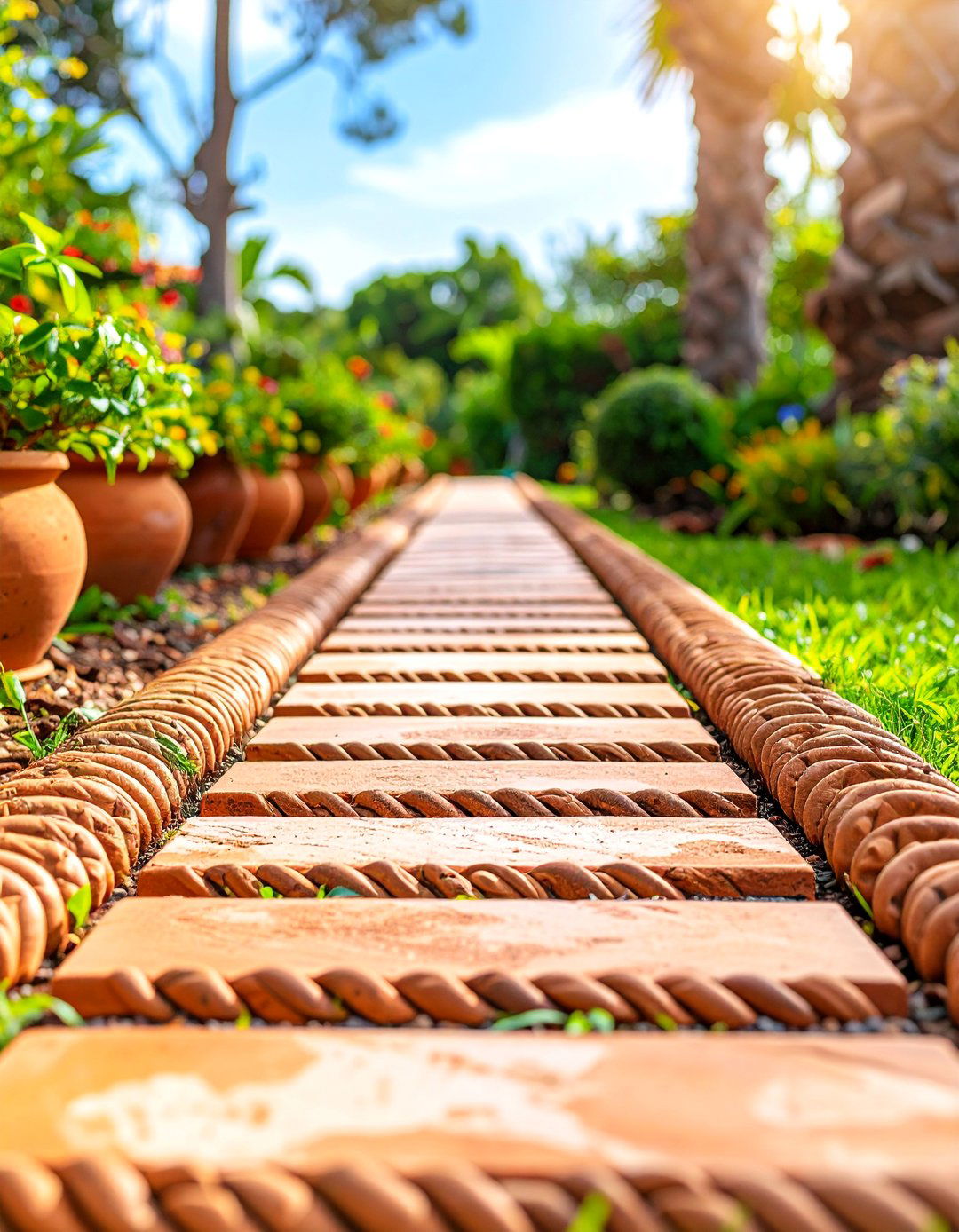
Terracotta tile edging brings warm, Mediterranean-inspired aesthetics to modern gardens through handcrafted clay tiles with decorative patterns and rich earth tones. These fired clay elements provide excellent weather resistance while developing attractive patina over time that enhances their visual appeal. Traditional rope-top patterns, scalloped edges, and geometric designs offer various stylistic options to complement different garden themes. The tiles install easily by pressing into prepared trenches, with their weight providing stable positioning without additional anchoring systems. The warm terra cotta colors work beautifully with both Mediterranean plants and contemporary perennial gardens, creating cohesive color palettes. This classic edging material particularly enhances courtyard gardens, herb gardens, and landscapes that emphasize warm color schemes and traditional craftsmanship alongside modern planting design.
12. Recycled Rubber Flexible Edging
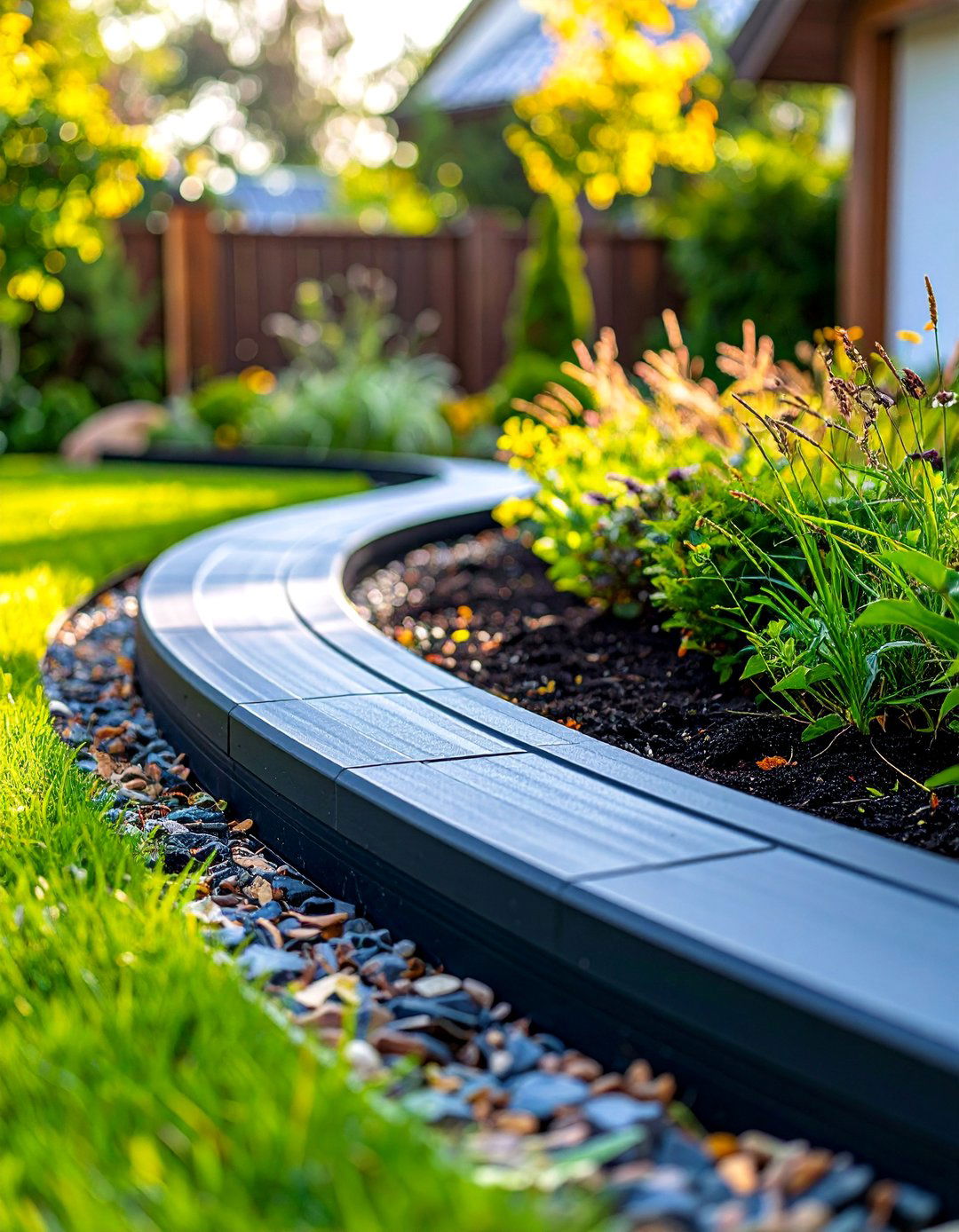
Recycled rubber edging provides eco-friendly, flexible borders made from repurposed tire materials that offer excellent durability and adaptability to curved garden edges. The material maintains flexibility in all weather conditions while providing strong containment for mulch, gravel, and soil amendments. Available in various colors and textures, rubber edging can complement different design themes while supporting sustainable landscape practices. The lightweight installation requires simple trenching and can be easily modified or relocated as garden designs evolve. UV-resistant formulations prevent degradation from sun exposure while maintaining color and flexibility over many years. This sustainable edging solution particularly suits informal garden styles, children's play areas, and landscapes where flexible borders are needed around curved beds and irregular planting areas.
13. Mosaic Tile Artistic Patterns

Mosaic tile edging creates artistic, colorful borders using broken ceramic tiles, glass pieces, or purpose-made mosaic materials arranged in decorative patterns. This creative approach allows for personalized design expression through color combinations, geometric patterns, or representational imagery that reflects individual style preferences. The tiles can be set in concrete or mortar beds that provide permanent installation and weather resistance. Grout lines between tiles can be colored to enhance pattern definition or create subtle background effects. The artistic nature of mosaic work allows incorporation of found materials, vintage tiles, or specially commissioned pieces for unique installations. This artistic edging solution particularly enhances creative garden spaces, memorial gardens, and landscapes where personal expression and handcrafted details are valued alongside functional border definition.
14. Plastic Roll Contemporary Lines
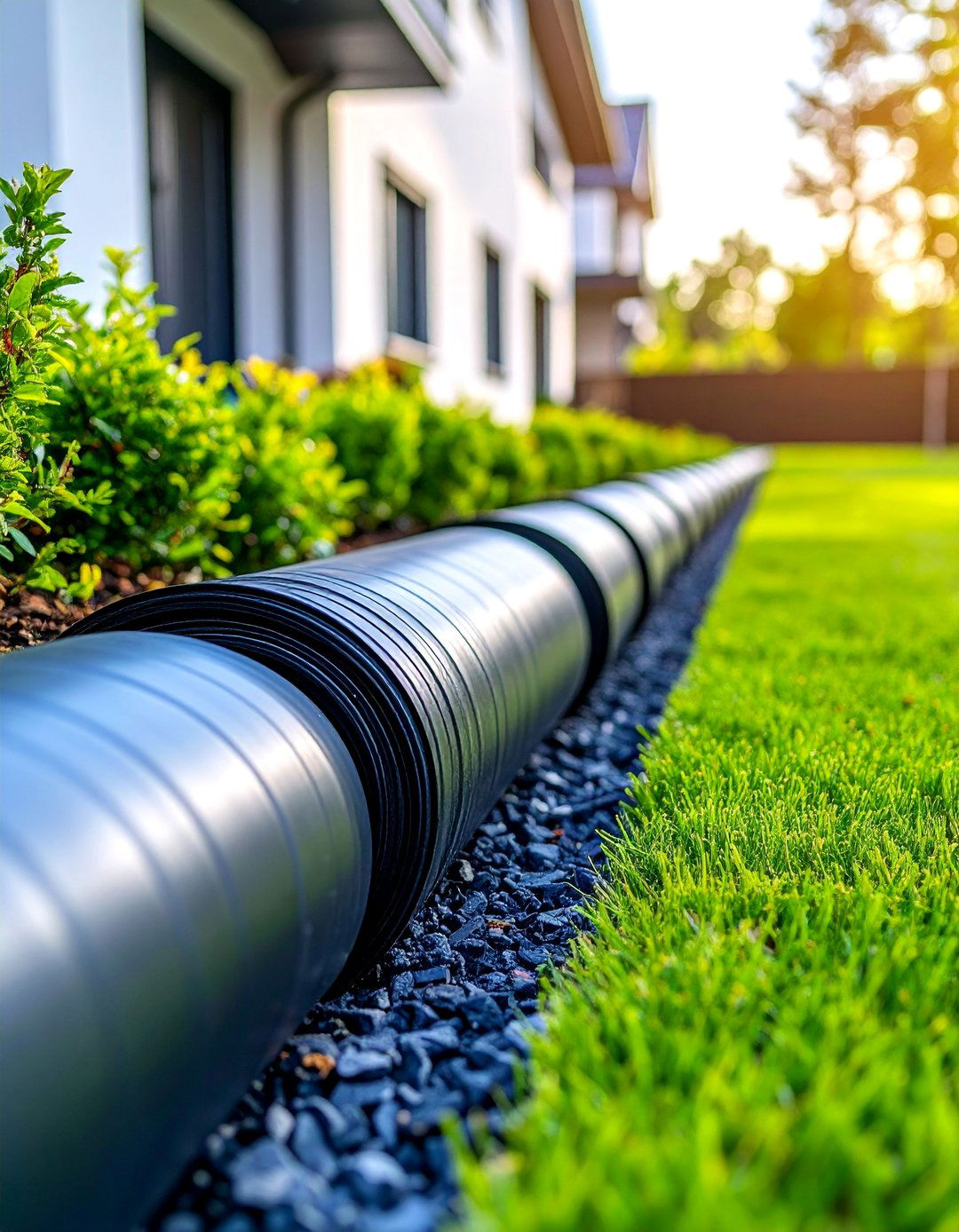
Plastic roll edging provides budget-friendly, contemporary borders with clean lines and consistent appearance that works well in modern residential landscapes. High-quality plastic formulations offer UV resistance and flexibility while maintaining structural integrity over many years of outdoor exposure. The material installs easily with simple trenching and securing systems, making it popular for DIY garden projects and large-scale installations. Various colors and profiles accommodate different design preferences and functional requirements for grass containment and bed definition. The lightweight nature allows for easy installation and modification as garden layouts change over time. This affordable edging solution particularly suits contemporary subdivisions, commercial landscapes, and residential gardens where clean, maintenance-free borders are prioritized over natural materials or premium architectural elements.
15. Solar LED Strip Illumination
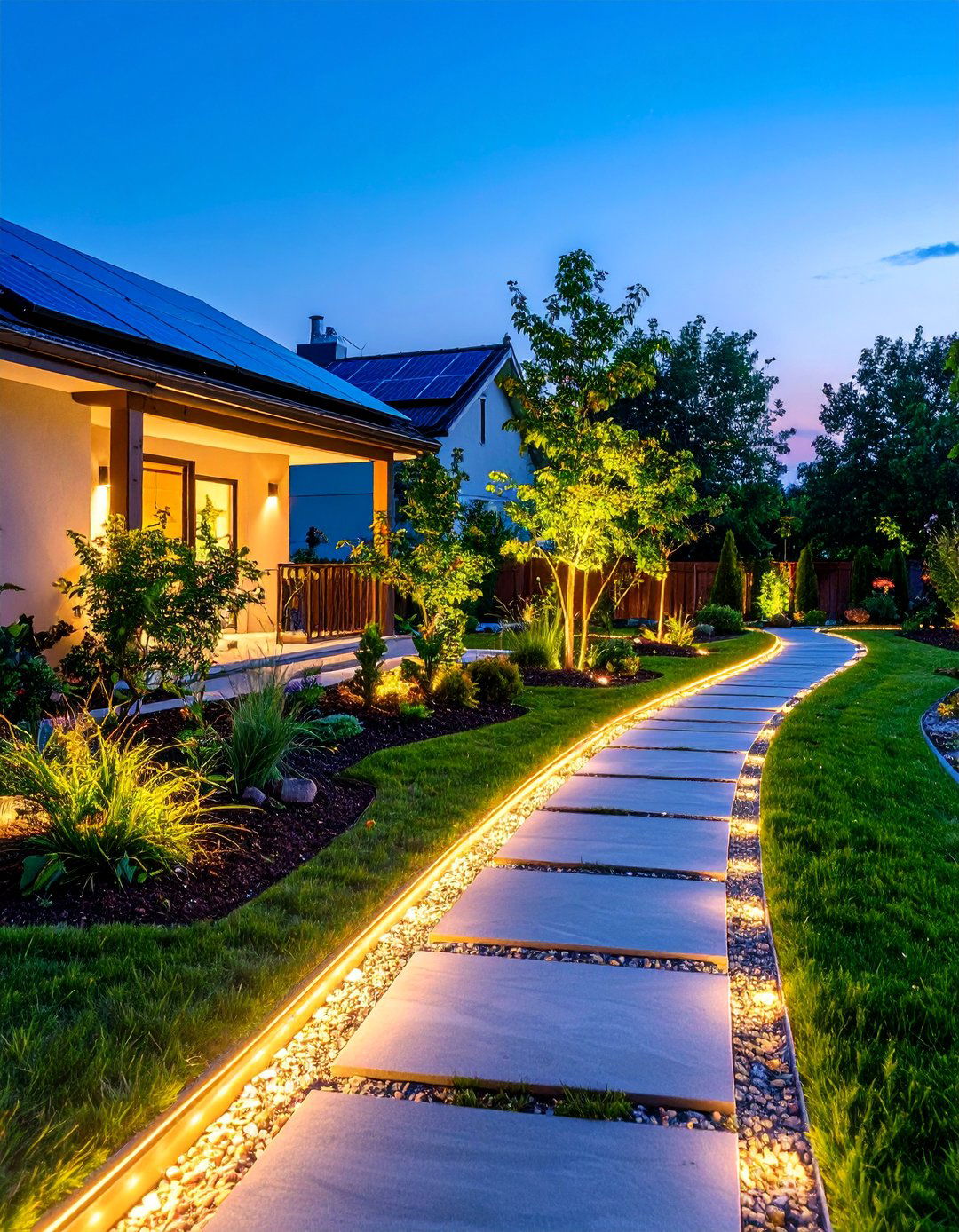
Solar LED strip edging combines functional garden borders with sustainable lighting systems that automatically illuminate pathways and planting areas after dark. These self-contained systems feature photovoltaic panels that charge during daylight hours and provide several hours of LED illumination each evening. The strips can be programmed for different colors, brightness levels, and timing sequences to create customized lighting effects throughout the garden. Weather-resistant construction ensures reliable operation in all outdoor conditions while requiring no electrical connections or ongoing energy costs. The lighting enhances safety for nighttime garden use while creating dramatic accent lighting for featured plants and architectural elements. This high-tech edging solution particularly appeals to modern homeowners who want sustainable technology integration and extended outdoor entertainment capabilities.
16. Weathering Steel Planter Integration

Weathering steel planter edging combines functional plant containers with structural borders that develop attractive rust patina while providing elevated planting opportunities. These substantial steel containers can be arranged in linear sequences or geometric patterns to create both edging and featured planting displays. The material develops protective rust coating that eliminates ongoing maintenance while providing rich color that complements both plants and hardscape elements. Various sizes and heights accommodate different plants and design requirements, from low border plantings to dramatic specimen displays. The containers provide excellent drainage and root protection while creating strong architectural presence in contemporary landscapes. This sophisticated edging solution particularly enhances modern commercial landscapes, contemporary residential gardens, and industrial-style outdoor spaces where bold materials and geometric forms are emphasized.
17. Geometric Concrete Block Architecture

Geometric concrete block edging creates bold, architectural borders using precast concrete elements in various shapes and sizes for dramatic contemporary garden definition. These substantial blocks can be arranged in linear patterns, stacked configurations, or geometric compositions that provide both functional edging and sculptural landscape elements. Surface textures, colors, and finishes offer customization options that complement architectural themes and site-specific design requirements. The blocks provide excellent stability and durability while creating strong visual weight that anchors large landscape compositions. Installation requires proper foundation preparation but results in permanent, low-maintenance borders that enhance property value. This architectural edging solution particularly suits contemporary institutional landscapes, modern residential developments, and commercial properties where bold geometric forms complement building architecture.
18. Natural Log Round Borders

Natural log round edging creates rustic, organic borders using cross-sections of locally sourced timber that provide sustainable, biodegradable garden boundaries. These circular elements can be arranged in various patterns and heights to create flowing, natural-looking edges that complement woodland and naturalistic garden styles. The wood develops attractive weathering and patina over time while gradually decomposing to enrich surrounding soil. Different tree species offer varying colors, textures, and decay rates for customized aesthetic and functional performance. The rounds can be partially buried for stability or surface-mounted for easy relocation as garden designs evolve. This sustainable edging solution particularly enhances native plant gardens, woodland landscapes, and eco-friendly garden designs where natural materials and organic forms are prioritized over manufactured products.
19. Gravel-Filled Channel Systems

Gravel-filled channel edging creates minimalist borders using excavated trenches filled with decorative stone aggregates for subtle, contemporary garden definition. These linear channels provide excellent drainage while creating clean transitions between lawn areas and planted beds. Various gravel sizes, colors, and textures accommodate different design preferences and functional requirements for water management and aesthetic enhancement. The channels can incorporate underground drainage systems or remain surface-level for simple installation and maintenance. Edging strips may be used to contain gravel while maintaining clean lines and preventing material migration. This understated edging solution particularly suits contemporary landscapes where subtle definition is preferred over bold architectural elements, and sustainable drainage management is prioritized alongside aesthetic considerations.
20. Woven Willow Living Borders
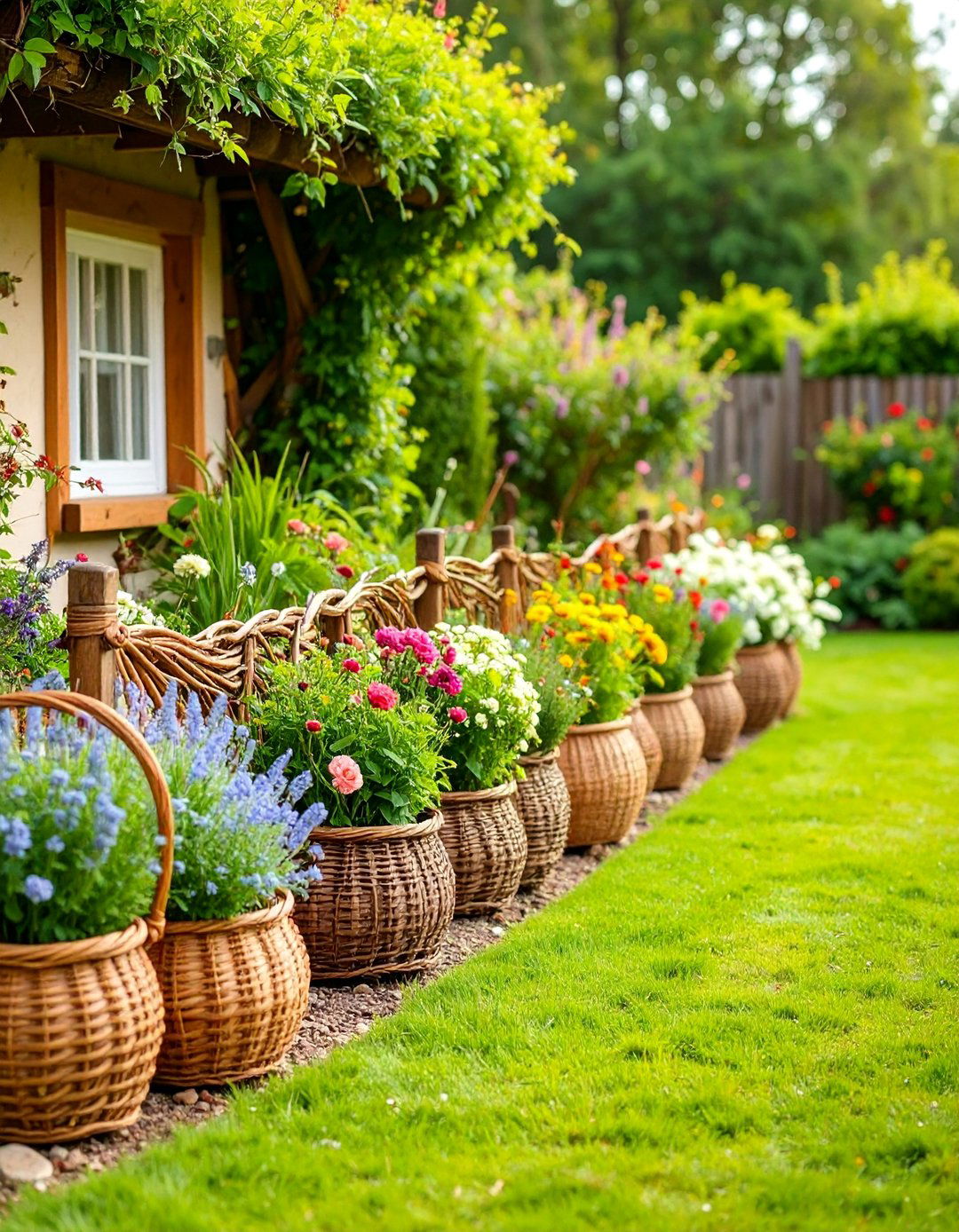
Woven willow edging creates organic, flexible borders using traditional basketry techniques with living or harvested willow branches for sustainable, biodegradable garden boundaries. The woven construction provides gentle containment while creating attractive textural elements that complement naturalistic planting schemes. Living willow installations may develop roots and continue growing, creating permanent hedging that can be maintained through regular pruning and weaving. Harvested willow gradually weathers and decomposes, requiring periodic replacement while enriching soil organic matter. The flexible construction adapts to irregular bed shapes and can be easily modified or relocated as garden designs evolve. This traditional craft technique particularly enhances cottage gardens, permaculture landscapes, and sustainable garden designs where handcrafted elements and renewable materials are valued over manufactured products.
21. Wine Bottle Upcycled Installations

Wine bottle edging creates unique, sustainable borders using inverted glass bottles that provide colorful, light-catching elements while recycling waste materials. The bottles can be arranged in various patterns and color combinations to create personalized design statements that reflect individual style preferences. Installation involves creating shallow trenches where bottles are positioned neck-down for stability and visual appeal. Different bottle colors and shapes provide variety while creating cohesive color themes throughout the garden. The glass surfaces reflect light and create interesting shadow patterns while providing durable, weather-resistant borders. This creative recycling approach particularly appeals to environmentally conscious gardeners who want unique, conversation-starting elements that demonstrate sustainable practices while adding distinctive character to their outdoor spaces.
22. Brick Herringbone Pattern Edging
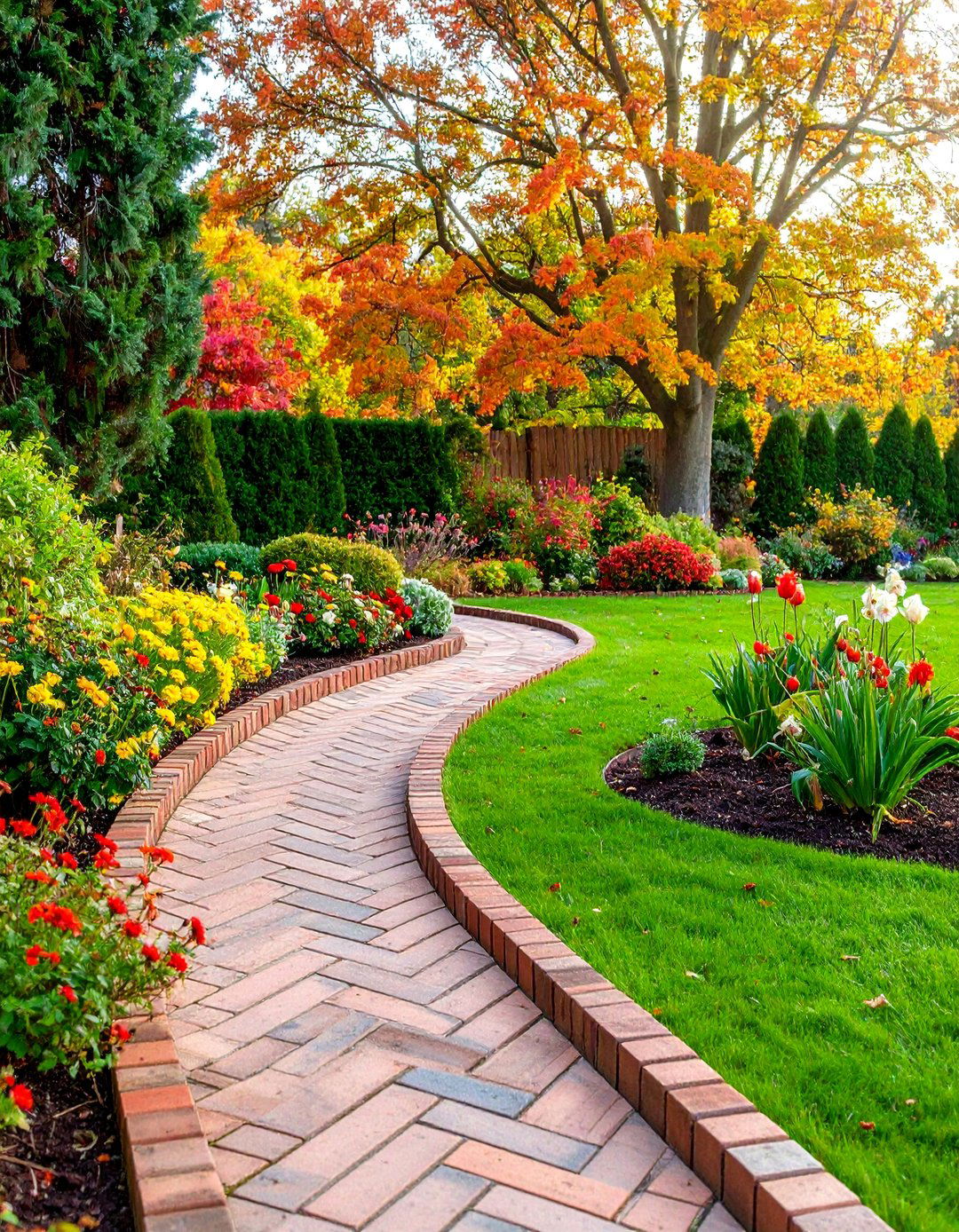
Brick herringbone edging creates classic, geometric borders using traditional masonry materials arranged in sophisticated zigzag patterns for timeless landscape definition. This installation technique provides excellent stability and visual interest through the interplay of individual brick elements in geometric relationships. Various brick colors, textures, and sizes accommodate different architectural styles and landscape themes from traditional to contemporary applications. The herringbone pattern provides superior structural integrity compared to straight-laid installations while creating dynamic visual movement along garden borders. Professional installation ensures proper foundation and alignment for long-term stability and appearance. This traditional masonry technique particularly enhances formal garden settings, historic property landscapes, and contemporary designs where classic materials and craftsmanship details are valued alongside modern planting schemes.
23. Flat Slate Tile Contemporary Strips
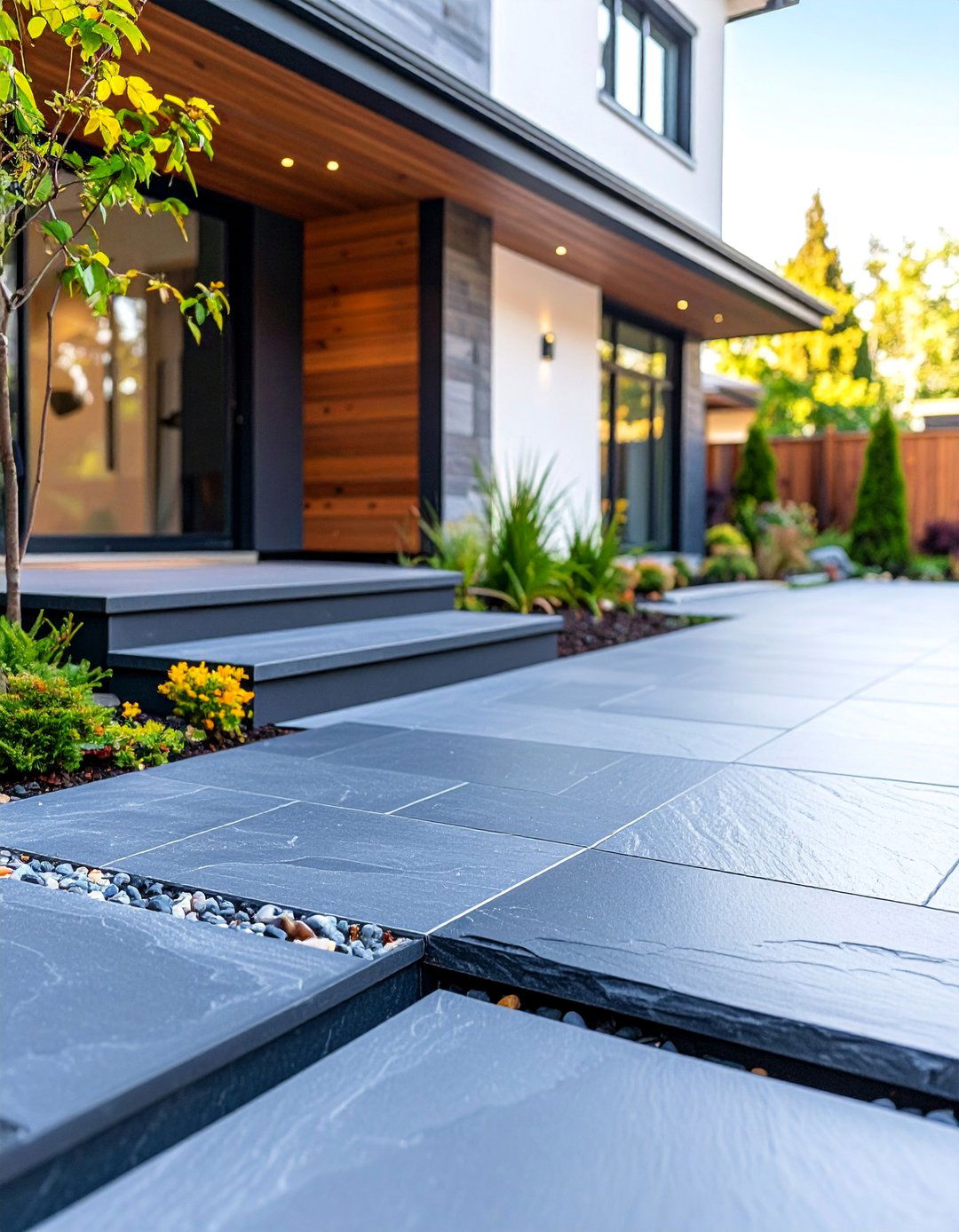
Flat slate tile edging creates sleek, contemporary borders using natural stone materials with smooth surfaces and clean edges for sophisticated landscape definition. The material provides excellent weather resistance and develops attractive patina over time while maintaining structural integrity and visual appeal. Various slate colors and surface finishes accommodate different design preferences and complement both modern and traditional architectural styles. The tiles can be installed individually or in continuous runs to create flowing borders that adapt to curved bed edges. The natural stone surface provides slip-resistant pathways while creating elegant transitions between different garden areas and materials. This premium natural material particularly enhances contemporary residential landscapes, commercial installations, and high-end garden designs where sophisticated materials and refined details are prioritized alongside functional performance requirements.
24. Metal Panel Sculptural Statements
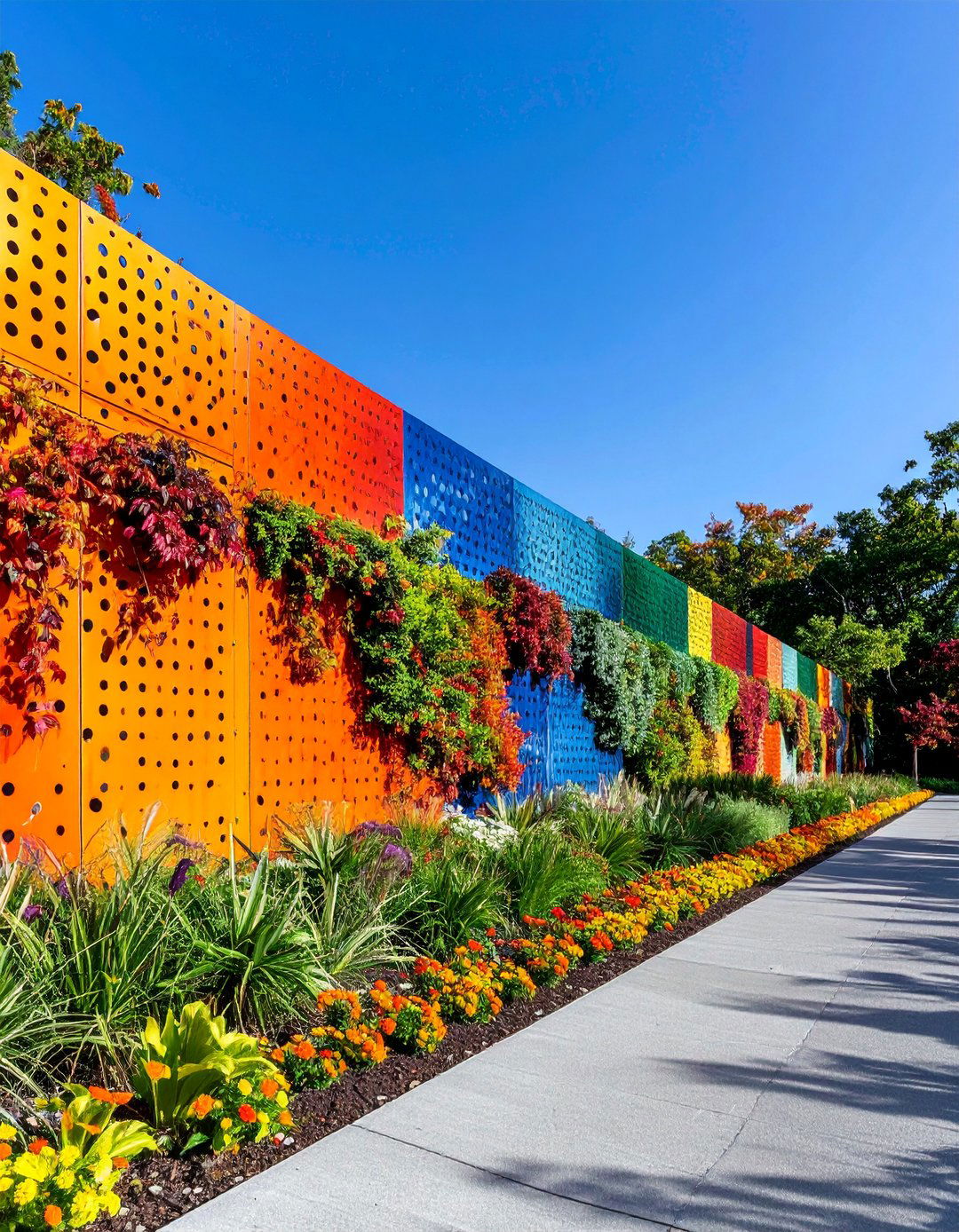
Metal panel edging creates artistic, sculptural borders using custom-fabricated steel or aluminum elements with decorative patterns, perforations, or surface treatments. These architectural elements provide both functional garden definition and artistic focal points that enhance landscape visual interest. Various metal finishes including powder coating, patina treatments, and natural weathering offer customization options for different design themes. The panels can incorporate lighting systems, planting pockets, or water features for enhanced functionality and visual appeal. Professional fabrication ensures proper engineering and installation for long-term stability and appearance. This contemporary art approach particularly suits modern residential landscapes, commercial developments, and public spaces where distinctive design elements and artistic expression are valued alongside functional landscape performance.
25. Driftwood Coastal Natural Arrangements

Driftwood edging creates organic, coastal-inspired borders using naturally weathered wood pieces arranged in flowing, sculptural compositions for beachside and naturalistic garden themes. The weathered wood provides attractive silver-gray coloration and interesting textures that complement seaside plantings and informal landscape styles. Various sizes and shapes of driftwood pieces can be arranged in linear borders or naturalistic groupings that evolve over time. The material provides sustainable, biodegradable borders that gradually decompose while enriching surrounding soil conditions. Seasonal rearrangement allows for design flexibility and incorporation of newly discovered pieces from beach walks. This natural material approach particularly enhances coastal gardens, meditation spaces, and landscapes where connection with natural processes and organic forms are prioritized over formal geometric design elements.
Conclusion:
Modern garden edging offers endless possibilities for creating sophisticated outdoor spaces that blend functionality with contemporary aesthetic appeal. From sustainable materials like bamboo and recycled rubber to high-tech LED systems and artistic metal installations, today's edging solutions cater to diverse design preferences and environmental values. The key to successful modern edging lies in selecting materials and styles that complement your architecture, support your plants, and reflect your personal design vision while providing long-term durability and low maintenance requirements.


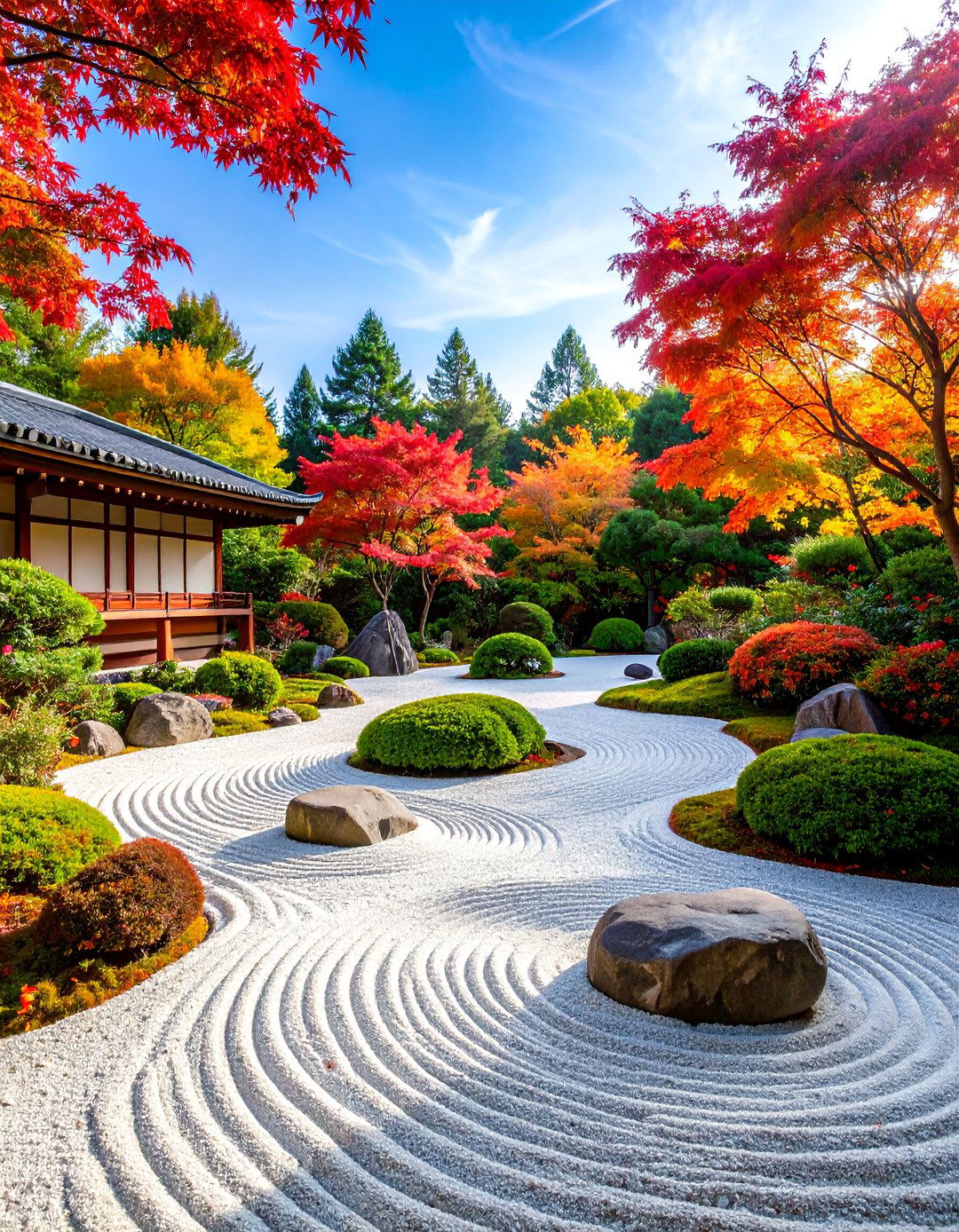

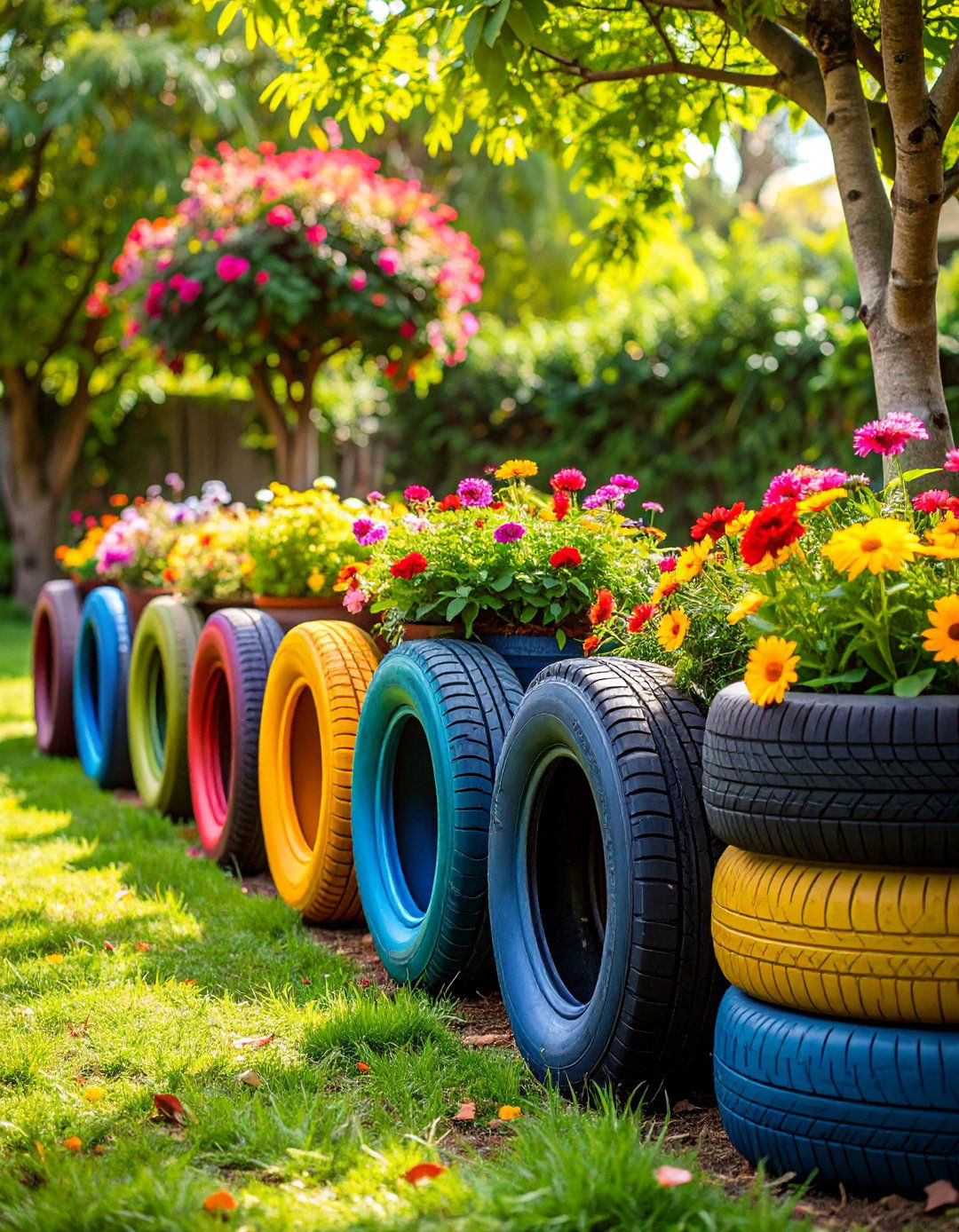

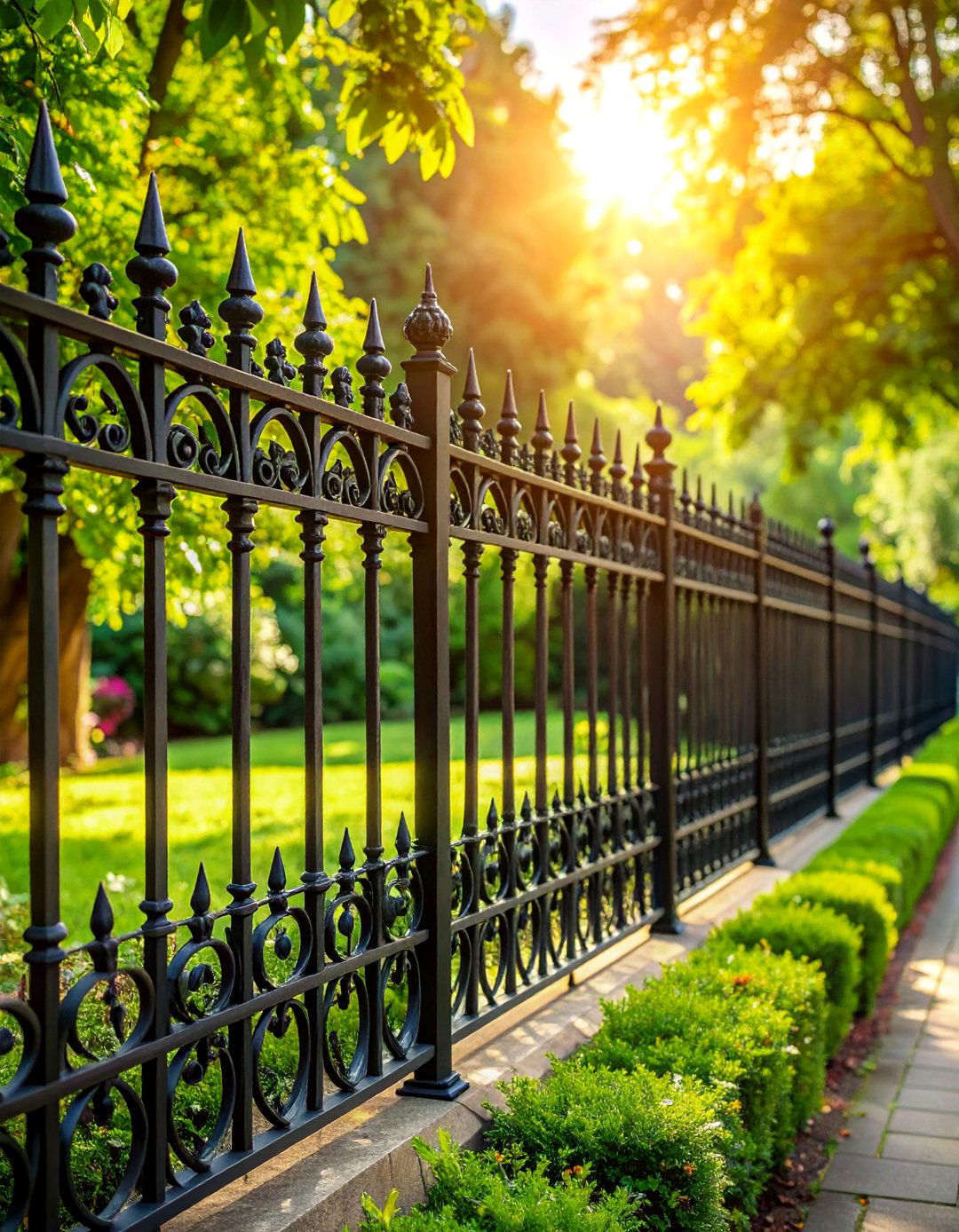
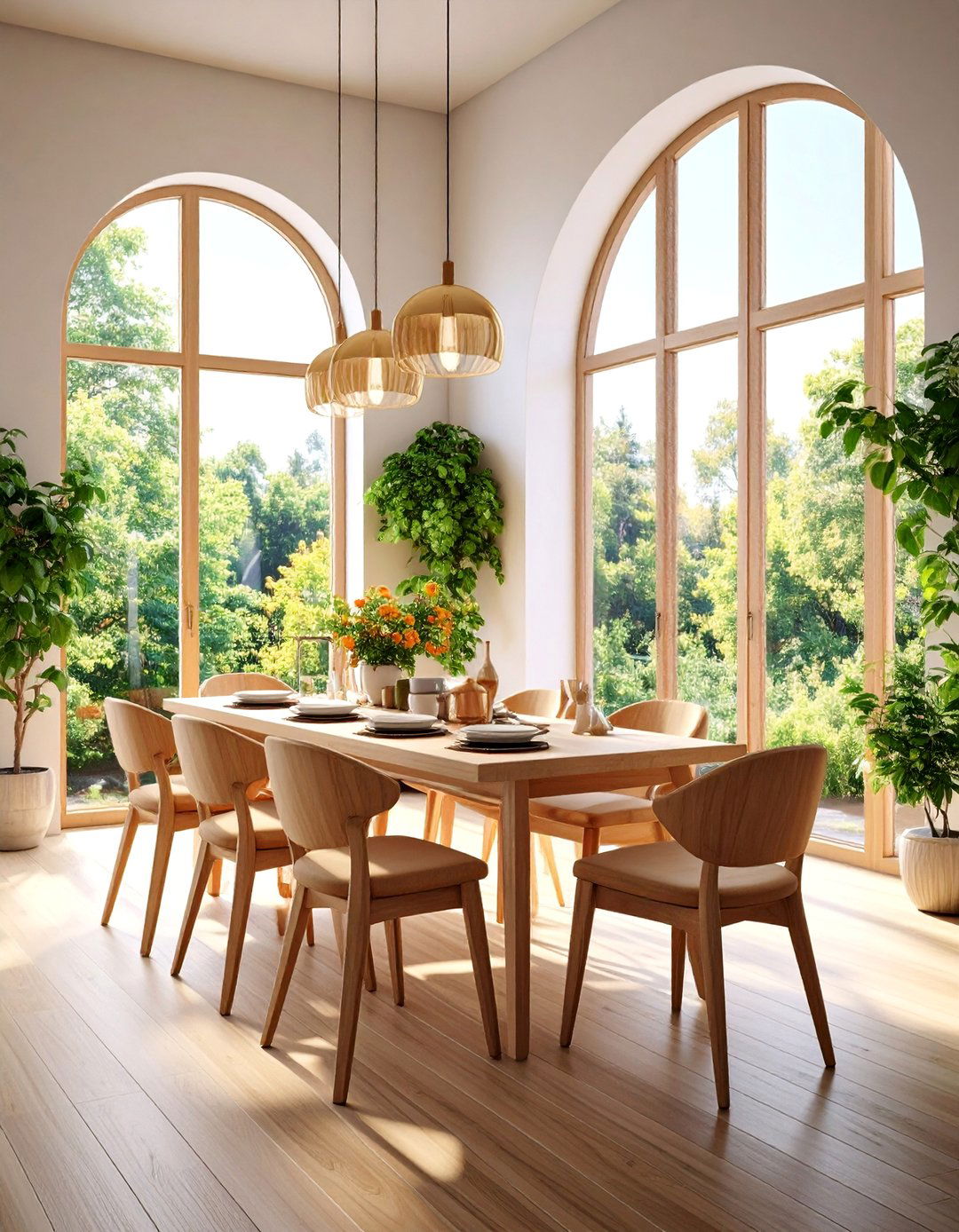

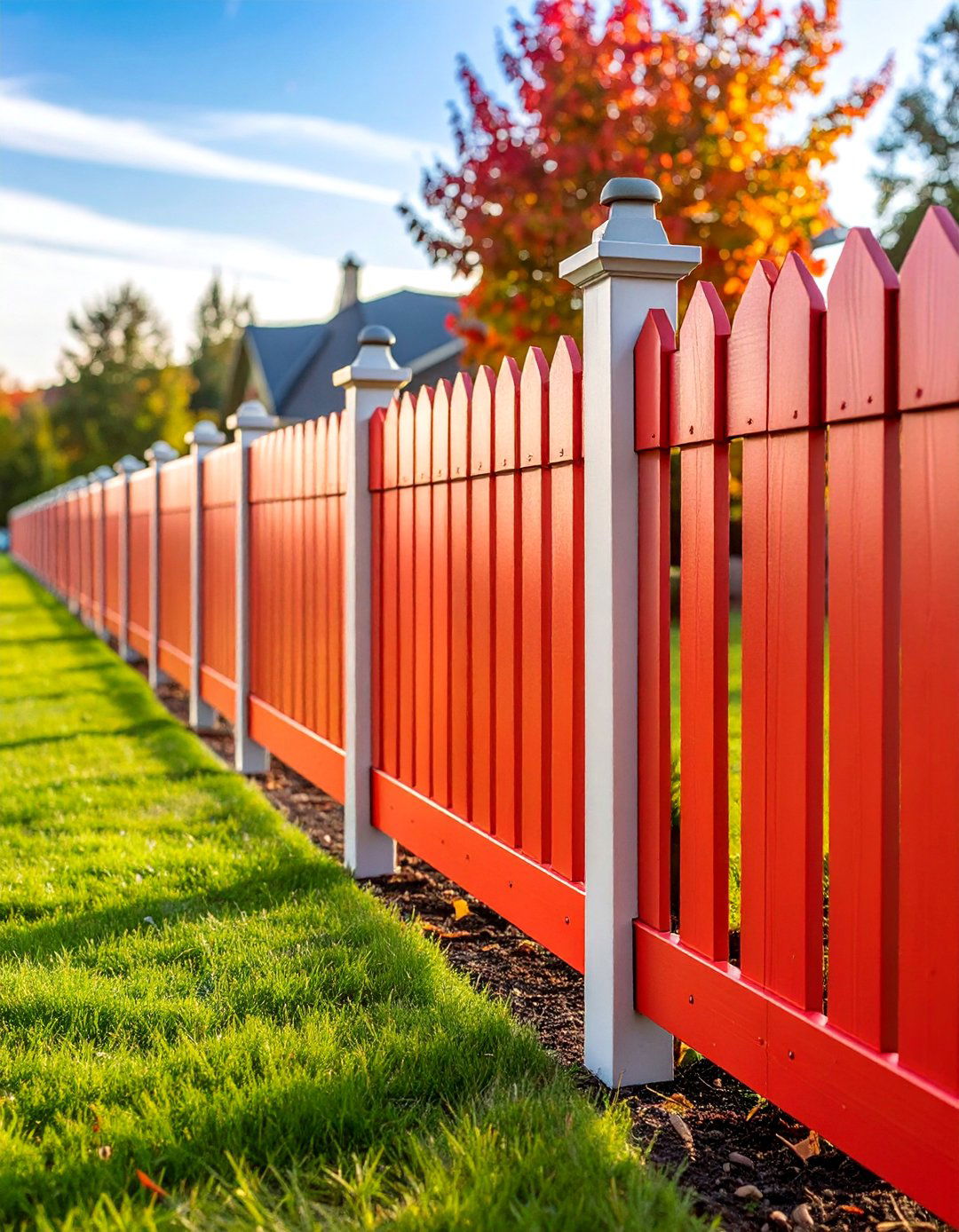
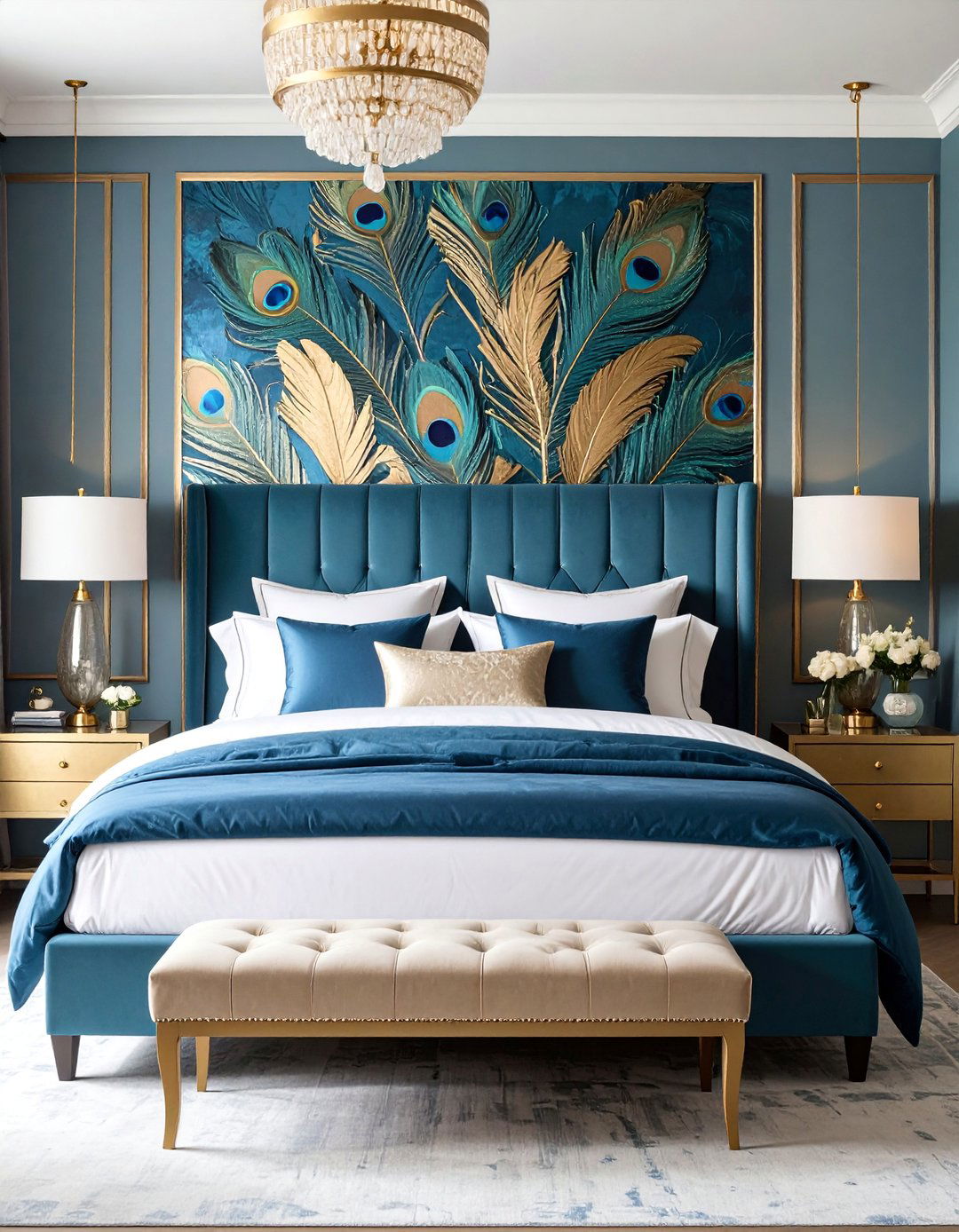





Leave a Reply